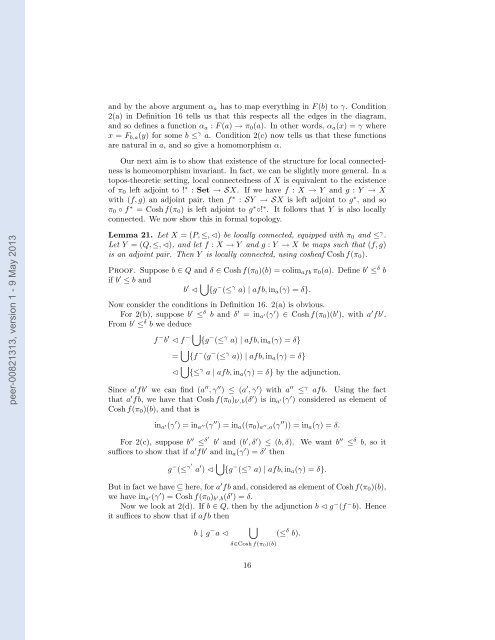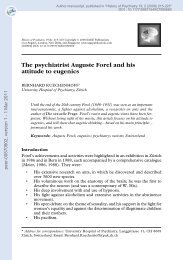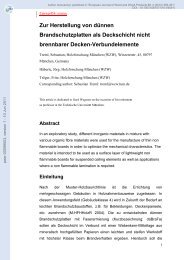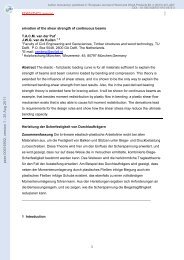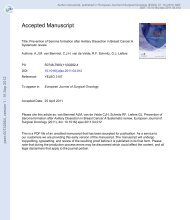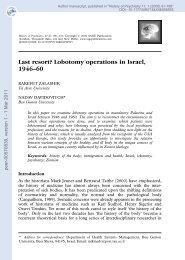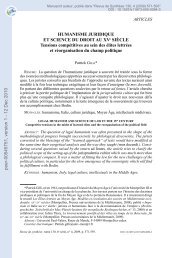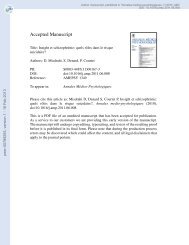Cosheaves and connectedness in formal topology
Cosheaves and connectedness in formal topology
Cosheaves and connectedness in formal topology
You also want an ePaper? Increase the reach of your titles
YUMPU automatically turns print PDFs into web optimized ePapers that Google loves.
<strong>and</strong> by the above argument α a has to map everyth<strong>in</strong>g <strong>in</strong> F (b) to γ. Condition<br />
2(a) <strong>in</strong> Def<strong>in</strong>ition 16 tells us that this respects all the edges <strong>in</strong> the diagram,<br />
<strong>and</strong> so def<strong>in</strong>es a function α a : F (a) → π 0 (a). In other words, α a (x) = γ where<br />
x = F b,a (y) for some b ≤ γ a. Condition 2(c) now tells us that these functions<br />
are natural <strong>in</strong> a, <strong>and</strong> so give a homomorphism α.<br />
Our next aim is to show that existence of the structure for local <strong>connectedness</strong><br />
is homeomorphism <strong>in</strong>variant. In fact, we can be slightly more general. In a<br />
topos-theoretic sett<strong>in</strong>g, local <strong>connectedness</strong> of X is equivalent to the existence<br />
of π 0 left adjo<strong>in</strong>t to ! ∗ : Set → SX. If we have f : X → Y <strong>and</strong> g : Y → X<br />
with (f, g) an adjo<strong>in</strong>t pair, then f ∗ : SY → SX is left adjo<strong>in</strong>t to g ∗ , <strong>and</strong> so<br />
π 0 ◦ f ∗ = Cosh f(π 0 ) is left adjo<strong>in</strong>t to g ∗ ◦! ∗ . It follows that Y is also locally<br />
connected. We now show this <strong>in</strong> <strong>formal</strong> <strong>topology</strong>.<br />
peer-00821313, version 1 - 9 May 2013<br />
Lemma 21. Let X = (P, ≤, ⊳) be locally connected, equipped with π 0 <strong>and</strong> ≤ γ .<br />
Let Y = (Q, ≤, ⊳), <strong>and</strong> let f : X → Y <strong>and</strong> g : Y → X be maps such that (f, g)<br />
is an adjo<strong>in</strong>t pair. Then Y is locally connected, us<strong>in</strong>g cosheaf Cosh f(π 0 ).<br />
Proof. Suppose b ∈ Q <strong>and</strong> δ ∈ Cosh f(π 0 )(b) = colim afb π 0 (a). Def<strong>in</strong>e b ′ ≤ δ b<br />
if b ′ ≤ b <strong>and</strong><br />
b ′ ⊳ ⋃ {g − (≤ γ a) | afb, <strong>in</strong> a (γ) = δ}.<br />
Now consider the conditions <strong>in</strong> Def<strong>in</strong>ition 16. 2(a) is obvious.<br />
For 2(b), suppose b ′ ≤ δ b <strong>and</strong> δ ′ = <strong>in</strong> a ′(γ ′ ) ∈ Cosh f(π 0 )(b ′ ), with a ′ fb ′ .<br />
From b ′ ≤ δ b we deduce<br />
f − b ′ ⊳ f − ⋃ {g − (≤ γ a) | afb, <strong>in</strong> a (γ) = δ}<br />
= ⋃ {f − (g − (≤ γ a)) | afb, <strong>in</strong> a (γ) = δ}<br />
⊳ ⋃ {≤ γ a | afb, <strong>in</strong> a (γ) = δ} by the adjunction.<br />
S<strong>in</strong>ce a ′ fb ′ we can f<strong>in</strong>d (a ′′ , γ ′′ ) ≤ (a ′ , γ ′ ) with a ′′ ≤ γ afb. Us<strong>in</strong>g the fact<br />
that a ′ fb, we have that Cosh f(π 0 ) b′ ,b(δ ′ ) is <strong>in</strong> a ′(γ ′ ) considered as element of<br />
Cosh f(π 0 )(b), <strong>and</strong> that is<br />
<strong>in</strong> a ′(γ ′ ) = <strong>in</strong> a ′′(γ ′′ ) = <strong>in</strong> a ((π 0 ) a ′′ ,a(γ ′′ )) = <strong>in</strong> a (γ) = δ.<br />
For 2(c), suppose b ′′ ≤ δ′ b ′ <strong>and</strong> (b ′ , δ ′ ) ≤ (b, δ). We want b ′′ ≤ δ b, so it<br />
suffices to show that if a ′ fb ′ <strong>and</strong> <strong>in</strong> a (γ ′ ) = δ ′ then<br />
g − (≤ γ′<br />
a ′ ) ⊳ ⋃ {g − (≤ γ a) | afb, <strong>in</strong> a (γ) = δ}.<br />
But <strong>in</strong> fact we have ⊆ here, for a ′ fb <strong>and</strong>, considered as element of Cosh f(π 0 )(b),<br />
we have <strong>in</strong> a ′(γ ′ ) = Cosh f(π 0 ) b′ ,b(δ ′ ) = δ.<br />
Now we look at 2(d). If b ∈ Q, then by the adjunction b ⊳ g − (f − b). Hence<br />
it suffices to show that if afb then<br />
⋃<br />
b ↓ g − a ⊳<br />
(≤ δ b).<br />
δ∈Cosh f(π 0)(b)<br />
16


